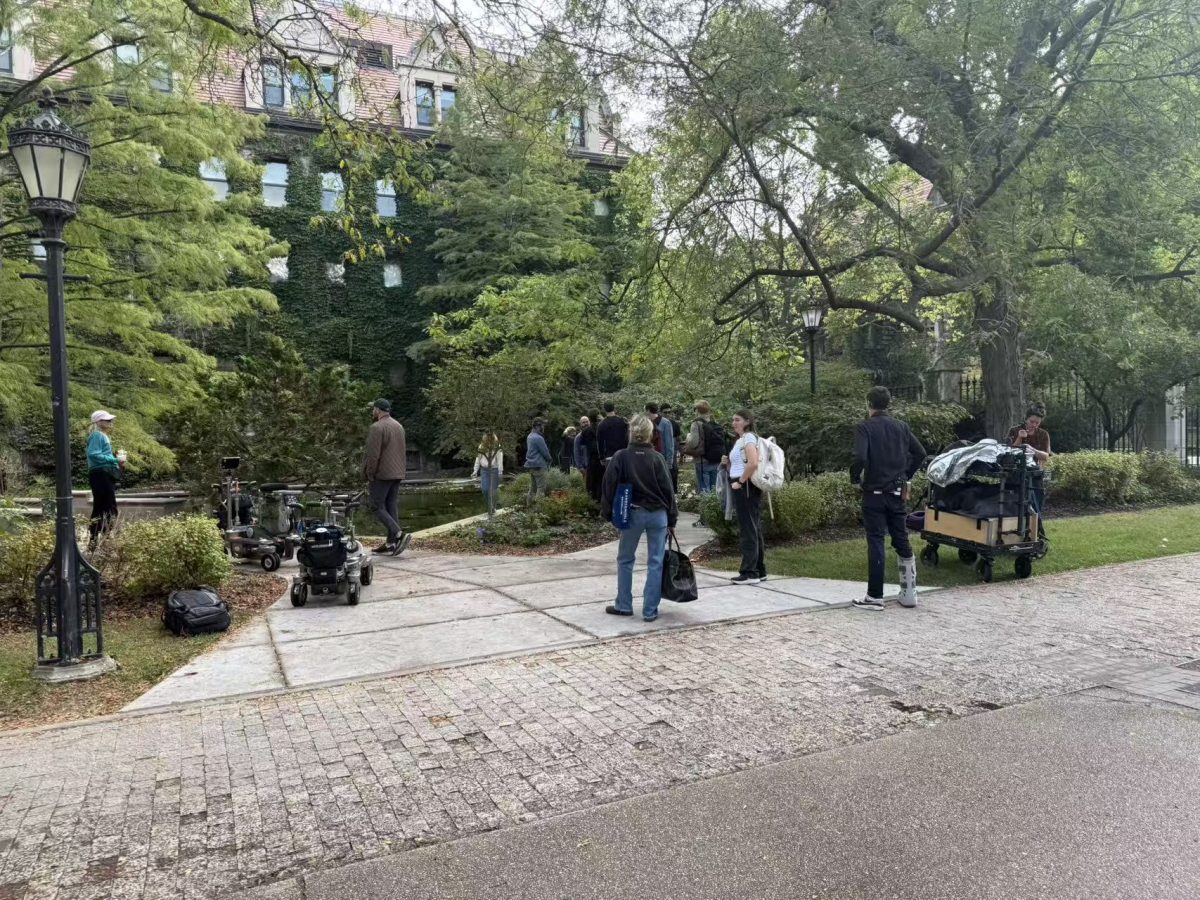About three dozen people gathered at the Hyde Park Neighborhood Club on April 25 to share ideas about the future of Harper Court.
James Withrow, vice president of the Hyde Park–Kenwood Community Conference (HPKCC), which organized the meeting, said the goal was to get “starting ideas” leading toward “the large-picture idea of what should happen with Harper Court.”
“If the community is going to have some input here, it’s important that, as much as possible, we speak with one voice,” Withrow said.
The meeting was the third held by the HPKCC on the issue.
Harper Court was established in the 1960s as a haven for artisans and small businesses displaced by urban renewal. In December, the shopping center was transferred from the Harper Court Foundation to the Harper Court Arts Council, a smaller, younger nonprofit operating out of the same office. The transfer drew criticism from residents who felt that the perceived lack of transparency and public input indicated a departure from Harper Court’s original purpose.
At a March 13 Tax Increment Financing (TIF) Advisory Council meeting, members of the Arts Council addressed the public for the first time, confirming their intent to sell Harper Court to a for-profit developer.
The group also announced its intention to gather community input in another TIF Advisory Council meeting set for May 8.
Representatives from the Arts Council declined to comment to the Maroon, saying that they would make a full presentation at the TIF meeting.
The HPKCC has called for an open and public Request for Proposals process, though it has taken no official position on the future development of Harper Court.
Withrow asked those assembled what an improved Harper Court should do for the neighborhood, what the facility should look like, and how the community should work to ensure that the project benefits both the neighborhood and the mission of the Harper Court Foundation/Arts Council.
In small working groups, attendees drew up answers that reflected a variety of opinions, ranging from “mixed-use, low-rise businesses” to “build up vertically.” A third option suggested building high on the east side of Harper Court and keeping low-rise buildings to the west.
The group reached a consensus on other issues, as almost everyone in attendance agreed that Harper Court’s current tenants should remain.
“Business owners who have an interest in the community provide better for the community,” said Joshua Koppel, a longtime Hyde Park resident and U of C alumnus.
Visibility was also a major topic. Many attendees felt that Harper Court does not do enough to attract customers, and that not all residents, particularly students, are aware of its shops.
“I was up and down 53rd Street for a month and a half before I saw it was there,” said Megan Anderson, who moved to Hyde Park this year.
Other suggestions included entrance arches, public events, a teen-friendly skateboard park in the parking lot, a theater complex, and the return of public chessboards, which were removed in April 2002.
Withrow’s question about what actions community members should take also generated a range of responses. Noam Perlman, a fourth-year in the College, said residents should pressure for more community representation on the Arts Council board.
“This is the bottleneck,” Perlman said. “[Residents] own it, and they can do what they want.”
Della Moran, a member of the grassroots community group Neighbors to Save Harper Court, recommended the use of community land trusts, which effectively separate land and the property on it. Others suggested working more intensively with 4th Ward Alderman Toni Preckwinkle as well as raising community awareness about the issue.
George Rumsey, president of the HPKCC, said Harper Court was on the agenda for the next board meeting, scheduled for this Thursday. The HPKCC is expected to present its suggestions to the Arts Council prior to its May 8 TIF Advisory Council meeting.








